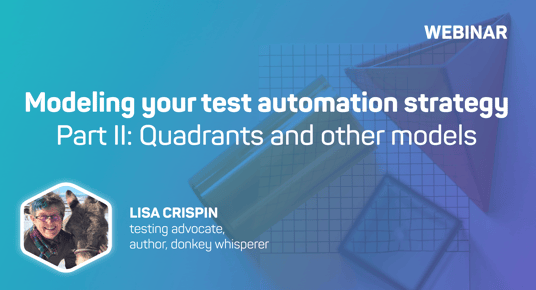In Part 1 of this series, we looked at the test automation pyramid and other triangle-shaped models that help teams visualize their test automation strategy. In Part 2, we’ll look at other models you can use to talk about how to tackle the many challenges of test automation.
The Agile Testing Quadrants model is useful for thinking about different types of tests, whether they should be automated, and who should participate in automating them.
- We’ll explore variations on the basic Quadrants model that might help in different contexts such as continuous delivery.
- We’ll also introduce visual techniques to identify risks and dependencies to consider as you form your automation strategy.
- Finally we’ll revisit another adaptation of the test automation pyramid that can identify gaps in your chosen strategy and help you adapt as you learn.
Watch the recorded webinar below:
Check out Part 1 and Part 3 as well!
Referenced Material:
More Agile Testing Chapter on using models available at https://agiletester.ca/more-agile-testing-the-book/
A Practical Guide to Testing in Devops, Katrina Clokie, https://leanpub.com/testingindevops
Discovery: Explore behavior using examples, Seb Rose and Gaspar Nagy, http://bddbooks.com/
“Lower level automation and testing? Be more precise! The automation triangle revisited… again!” Toyer Mamoojee, https://toyerm.wordpress.com/2018/10/16/lower-level-automation-and-testing-be-more-precise-the-automation-triangle-revisited-again
The Team Guide to Software Testability, Ash Winter and Rob Meaney, https://leanpub.com/softwaretestability
“Your automation testing strategy: pyramids, triangles and beyond”, Lisa Crispin, https://www.mabl.com/blog/your-automation-testing-strategy






